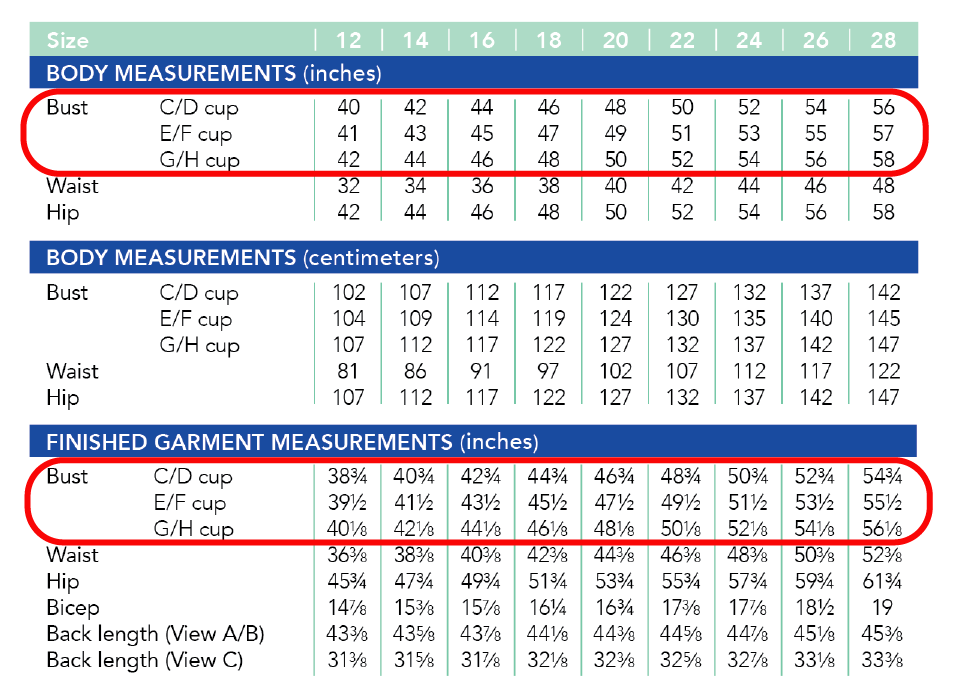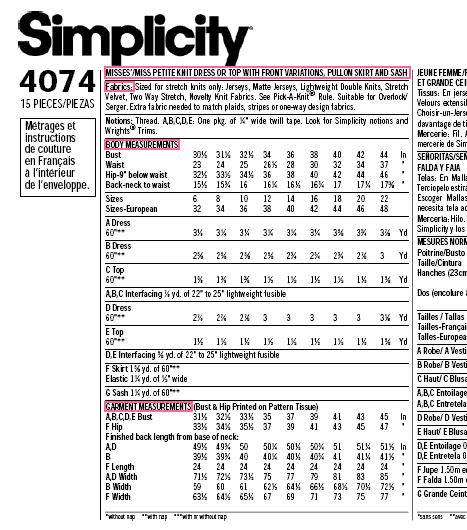average garment ease allowance on sewing patterns
Calculating and removing ease from a sewing pattern Sewing Patterns says. For example when sewing a side seam at 58seam allowance each individual fabric piece.

Garment Ease Sewing Techniques Patternmaking Sewing Skills
One of the most important is the fit.

. There is so much assumed knowledge in sewing patterns right. All patterns contain a certain amount of ease for wearability. However the home sewer requires more seam allowance to produce a garment of high quality.
Negative ease is used in garments like activewear and swimwear. The ease allowances of 62 male customers were investigated through the sensory evaluations once in the initial fitting jackets which were designed using the graded. All garments technically have ease counted for whether it is made out of woven or knit fabric.
The specific amount of ease will vary from style to style. Ease allowance of garments. Ease is particularly important in childrens and babies wear and again.
The garment ease is made up of two parts wearing ease and design ease. In order to sew a quality garment necessary to take account many factors. Spread vertical cut 12 of the total increase tapering to no spread at hem.
The edge of the fabric is aligned to the 34 guide line. For example ease at the waist in pants and skirts is usually. So when you are sewing a knit garment its important to check the stretch percentage of your fabric against the stretch percentage of your sewing pattern.
Garment ease allowances design considerations. Ease is incorporated into a block or a pattern to allow the wearer to move therefore ease is allowance for movement. The first priority is to the comfort level of the person you are sewing for.
So let me talk you through what ease is the different types of ease and WHY it is in your gar. Style ease design ease is additional ease added to achieve the desired style such. When choosing the size you will make in a pattern look not only at the body measurements but also the finished garment measurements.
Ease is used to create style lines for garment function and to allow for movement of the body. Each term indicates a general amount of wearing ease and design ease that is built into the pattern. Many patterns will include this information for at least the 3 primary measurements bust.
The finished garment measurement is 40 inches. Sewing a seam at 34 seam allowance. The purpose of this study is to provide a quantitative reference required for the decision of ease allowance to draft mens formal jacket patterns by quantifying the customers actual tendency regarding the preferred fit.
On the horizontal slash spread the pattern the necessary amount at center front and taper to no spread at side seam. Ease allowance is a fundamental element in pattern making. Professional machinists are accustomed to sewing with 1 cm seam allowance.
If measuring without the hand add ease to the measurement. Then a pattern block is traced out using the sloper to which stage then the ease are added. If the pattern doesnt give you the finished garment measurements you can measure the pattern itself subtract the seam allowances and use that number to determine how much ease has been.
Pattern ease is the difference between the finished measurements of a garment and the measurements of your body. Cut pattern apart on lines then place paper under pattern. The two types mentioned above are two different topics.
To calculate the amount of ease you subtract the body measurements from the finished garment measurements. Woven garments tend to have more ease while knit garments can have much less due to their stretchy nature. After taking measurements the tailor first ease calculates.
Ease is the amount of space in a garment beyond the body measurements. Essentially there are two kinds of ease that a patternmaker adds to a pattern. The garment can be sewn very tight fitting fitting semi-fitting loose or very loose depending on the amount of ease added to it.
November 8 2013 at 715 am calculate how much to remove if you want a different amount of ease for your finished garment. On a pattern you might find phrases such as wearing ease or design ease. If a pattern gives you both the body measurements of the pattern size and finished garment measurements the difference between the two numbers is the ease.
Learn the tools and features included with sewing patterns for easier more accurate garment sewing. The standard seam allowance in most DIBY Club patterns is 38 for knit patterns and 58 for woven patterns these are typical universal standards. Deal with garment ease and adjustments.
Fitting ease wearing ease is the minimum amount of room needed for comfort and movement usually 1 1 ½ more than the body measurement. While woven garments add ease many knit garments subtract ease to get negative ease. Pin or tape in place.
Garment Minimum Upper Arm Ease Blouse 1 to 1½ Dress 1½ to 2 Unlined jacket 3 to 4 Lined jacket 3 to 4½ Coat 4 to 5½. How do I calculate the right amount of wearing ease. 3 Responses to Adding Seam Allowances to a Sewing Pattern.
So 40 minus 37 equals 3 inches of ease in the bust on a size 8. For example when I made Simplicitys 2599 pattern I found that had 4-5 more ease than I would have preferred. Ease in regards to the garment.
For example a woven garment typically requires 3-4 of wearing ease at the bustline to appear and feel fitted on the body while a cotton knit may only require 1 of ease and a cottonelastane. Therefore I think they deserve attention in separates which is why this article is about 1 The Ease stitch and over here is the article to cover 2 Ease in the garment. Negative ease is when your final garment measurements are smaller than your body measurements but the stretch in the fabric will provide ease and room for movement.
The amount of ease we add to our sewing patterns depends on many things. Ease allows the wearer to breath bend sit down and move around. Wearing ease is the amount of ease necessary to move in the garment.
At 35 years of age and 110 pounds I could sew a size 10 with barely any ease and it looked and felt great. Some home sewing patterns allow less than 1 cm seam allowance and this makes it very difficult for a home sewer with a domestic machine the width of the foot and the design of a. It all begins with the sloper which is made with the exact body measurements.
The number one rule when it comes to sewing a seam is that the seam allowance of all fabric pieces forming the seam should have the same seam allowance length. Ease The amount of extra fabric allowed for movement andor style in a garment. While not often.
Ease varies depending on the area of the body covered by the pattern. I think that the pattern companies provide average ease which will be too much for a slender or youngfit figure but perfect for a more mature or flabbier one. Now lets talk about negative ease.
Appropriate ease for most sleeves.
P4p University Ease Patterns For Pirates

Functional And Design Ease Professor Pincushion

Understanding Garment Ease The Shapes Of Fabric

Butterick Ease Chart This Is Just For Fit Ease It Doesn T Account For Design Ease Pattern Sewing Techniques Ease

Gertie S New Blog For Better Sewing Dealing With Pattern Ease

Ease Allowance Chart Modeliste Creative

Ease In Patterns And Blocks Dress Patternmaking

What Is Negative Ease And How Does It Work Cashmerette

What Is Ease In Sewing Wearing Ease Design Ease Negative Ease Expla Charlotte Kan

Ease In Patterns And Blocks Dress Patternmaking

Pattern Making Fundamentals Seam Allowance The Cutting Class
Ease What It Is And How To Add It To Sewing Patterns
Ease What It Is And How To Add It To Sewing Patterns

Seeking Minimum Wearing Ease For Wovens Sewing Discussion Topic Patternreview Com

Gertie S New Blog For Better Sewing Dealing With Pattern Ease
Ease What It Is And How To Add It To Sewing Patterns

Ease In Patterns And Blocks Dress Patternmaking

